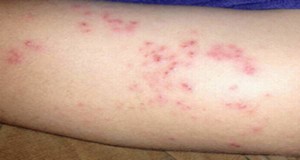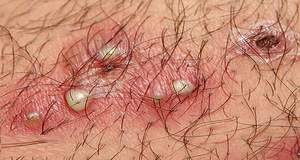WHAT IS RASH?
A rash may be localized in one part of the body, or affect all the skin. Rashes may cause the skin to change color, itch, become warm, bumpy, chapped, dry, cracked or blistered, swell, and may be painful.
The causes, and therefore treatments for rashes, vary widely. Diagnosis must take into account such things as the appearance of the rash, other symptoms, what the patient may have been exposed to, occupation, and occurrence in family members.Rash can last 5 to 20 days, the diagnosis may confirm any number of conditions.
WHAT IS CAUSING THE RASH?
A red or pink rash that is smooth or slightly bumpy and doesn’t itch could have many causes.
If it is all over your child’s body (widespread) some possible causes include:
- Viral illness (such as chickenpox, roseola, or measles)
- Reaction to a medicine or vaccine (such as the antibiotic amoxicillin or a measles shot)
- Heat or sun exposure (such as heat rash or sunburn)
- A fever over 103°F (39.5°C) can cause a transient pinkness of the skin that may be blotchy
A rash that occurs in just one spot (localized) also has many possible causes including:
- Rashes common to babies (such as cradle cap, drooling rash, milia, erythema toxicum, or diaper rash)
- Acne or boils
- Chemical or irritant on the skin
- Infections (such as impetigo or ringworm)
RASH SYMPTOMS & SIGNS
Most rashes tend to be itchy. Rashes can be further subdivided into itchy or non-itchy.
Types of itchy rashes
- hives (urticaria)
- bug bites
- scabies (mite infestation)
- eczema (skin allergy)
Non-itchy rashes (although these may at times also be itchy)
- rosacea
- psoriasis
Rashes come in many different colors, sizes, shapes, and patterns. Most rashes tend to be red because of skin inflammation.
Rashes may be described as:
- flat (macular),
- raised (papular),
- small pus bumps (pustular),
- small clear blisters (vesicular),
- red or pink,
- silvery white scales (psoriasis),
- annular (circular with central clearing, like in ringworm infections),
- eczematous (dry, scaly, rough, and thickened), or
- excoriated (scratched areas).
NONINFECTIOUS RASHES
- Contact dermatitis is by far the most common cause of noninfectious rash. It includes dermatitis as from poison ivy/oak as well as allergic skin rashes. External agents such as nickel can typically produce an inflammatory reaction over a period of time, causing itching, rash, or burning of the skin. Over the short term, this type of rash may cause superficial peeling, whereas more chronic cases cause thickened patches of skin.
- Psoriasis typically looks like thickened patches of dry red skin, particularly on the knees, elbows, and nape of the neck. There are many types of psoriasis, and this type of rash may uncommonly involve the entire body.
- Rosacea is a type of adult acne that may cause facial flushing, small pink bumps, and redness of the cheeks and nose.
- Lupus-related skin findings are known to become exacerbated by sunlight exposure. Lupus can present as red, raised patches or a generalized rash on the nose, ears, cheeks, and base of the nail folds.
- Seborrheic dermatitis or seborrhea is a common rash that is characterized by redness and scaling of the face, ears, eyebrows, and scalp.
HOW CAN I TAKE CARE OF MY CHILD?
Widespread rash
If the rash is due to a virus, no treatment is necessary. These rashes usually disappear within 48 hours.
If the pinkness is caused by a fever, it will clear when the fever comes down.
For other causes see related topics.
Localized rash
Localized red rashes can be due to a chemical or other irritant your child got on his skin. In such cases, no special treatment is necessary. Wash the skin once with soap to remove any irritating substances. Thereafter, cleanse it only with water. Don’t use any medications or petroleum jelly on this rash. If the rash seems dry, apply hand lotion twice a day. If it becomes itchy, apply 1% hydrocortisone cream (no prescription needed) 4 times a day.







